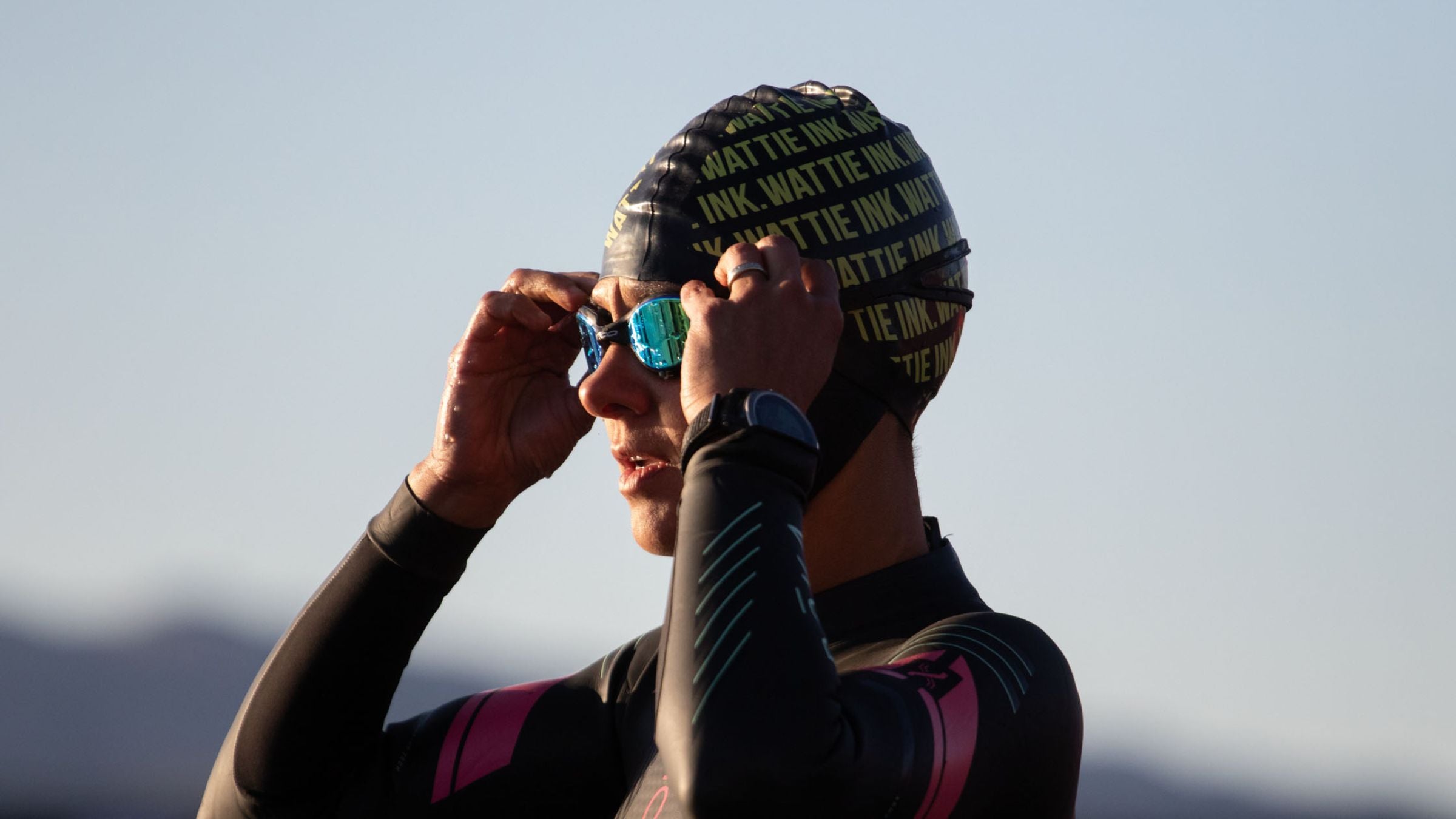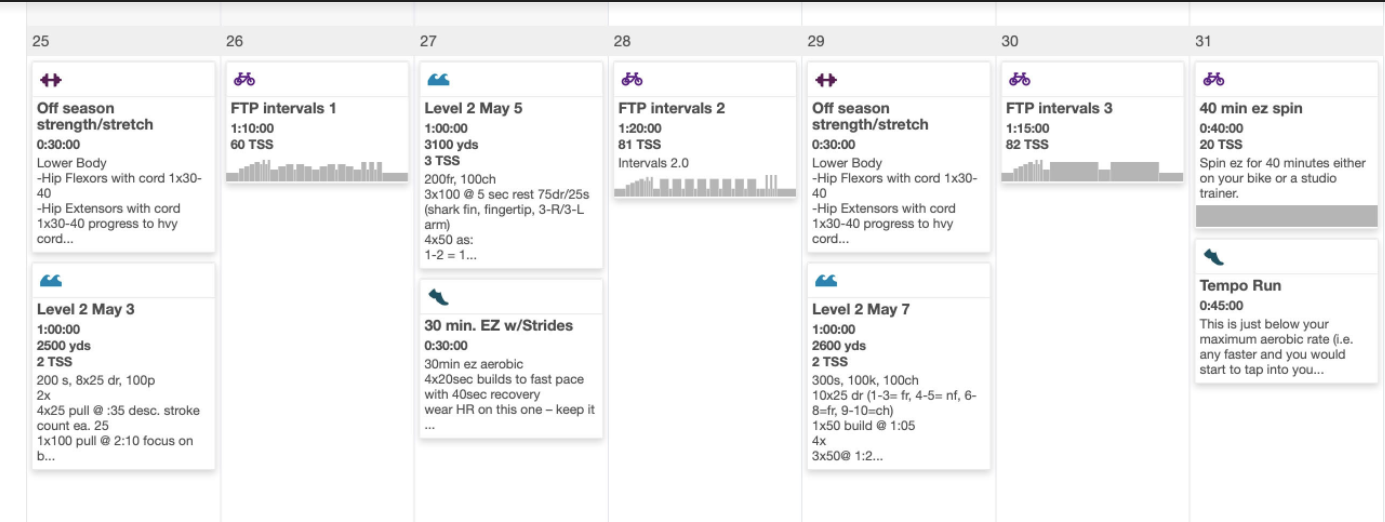How to Pull off a Mid-Season, Single-Sport Focused Training Block

(Photo: Brad Kaminski/Triathlete)
There’s more than one way to get better at tri. In fact, that’s what makes multisport so compelling. Take the single-sport training focus: Here we are in the middle of the season—do you take some time to shore up a weak discipline and risk detraining in the other two, or do you soldier on with tri-balanced training at the risk of leaving behind potential big gains?
We spoke with two coaches—one who found a three- to four-week single sport mesocycle beneficial, and one who doesn’t normally program a single-sport focus, with a few exceptions. Both coaches, though, said they would schedule heavy emphasis on one sport when dealing with an injury that made it impossible to train in the other disciplines.
“I would consider a single-sport emphasis if the athlete had a subpar race result in one of the three disciplines such that they were unable to remain competitive. For example, if they lost a lot of time on the bike,” said Kris Swarthout, Level 3 USAT certified coach with Final K Sporting Services.
RELATED: How to Successfully Execute a Swim-Focused Block
What does a single-sport training block look like?
A pro can bump up training in one sport without adjusting the other two, but most amateurs will need to reduce non-focus sports to two sessions per week. This allows for adaptation in the focus sport that can be accomplished within a fixed weekly time budget. In a bike-centric week, Swartout said maintenance mode might look like one higher intensity 45-50-minute run and a recovery run, and two one-hour swim sessions.
“It’s mostly the long, slow workouts [in non focus sports] that go away. In maintenance mode for three or four weeks, you’re not going to see a lot of atrophy in fitness,” Swartout said.
At the same time, the focus sport sees a progressive increase in frequency, intensity, and volume. He described a bike focused mesocycle that started in week #1 with three higher intensity workouts and one lower intensity, and progressed to five bike sessions the second week—four higher intensity, one lower. Key bike workouts are bordered with easy swim or run sessions. “Since it’s midseason, you have to take a bit more care to prevent overtraining and allow for adaptation,” Swarthout said.
Here’s a sample week #1 of 4 of a bike focus:

Swarthout avoids overtraining or injury by eschewing testing that’s normally done after an off-season single-sport training block. “An athlete might race during this mesocycle, but it would be a C level race with lower expectations and more fatigue going into it, almost like a workout.”
For more examples of single-sport focused training plans, try these:
- Single-Sport Focus: 4-Week Swim Training Plan for Triathletes
- Single-Sport Focus: 4-Week Bike Training Plan for Triathletes
- Single-Sport Focus: 4 Week Run Training Plan for Triathletes
When should I do a single-sport focused training block?
As to when to shoehorn a single-sport mesocycle into your racing season, Swarthout recommended “at least six weeks out from event day. If it’s a swim focus, it can be closer to the event because swimming demands less physiologically. If it’s a running focus, it should end eight weeks out from the event.”
Martin Spierings, USAT certified coach and owner of TCMTriSquad, has a different take on single sport blocks. “As a rule, endurance sports are pretty muscle specific and the ideal, especially in season, is to balance the three, so I would not normally program a single-sport block midseason.”
There are, he said, caveats. Most commonly with amateur athletes, those caveats are for injury or vacation. “I just wrote a single-sport plan for someone who’s going hiking in the Sierras and he’s not bringing his bike. So, he’ll swim and bike earlier in the week before he goes, and do only running while he’s on vacation. You have to be flexible to take advantage of things. Maybe someone is taking a weeklong cycling tour—that’s an opportunity to take their cycling to the next level.”
When injury restricts an athlete to one sport, Spierings would “significantly increase the volume of that sport—bumping swim sessions from three per week to six or seven per week, for example,” and adding gym work if physically able.
“An emphasis—greater volume than usual—would be warranted if there’s a blatant weakness,” he said. “For example, if a pro keeps missing the first pack of a draft-legal triathlon and her race was over before it began because of that. But I would still keep a maintenance level on the bike and run. In the same way, if someone was so afraid of swimming that they could potentially not finish the swim, you might want to do a very strong swim focus.”
That swim focus looks like this: six mornings a week for 45 mins, again, maintaining the other two disciplines with two runs and two bike sessions per week.
Spierings also said it’s the coach’s job to know the strengths and weaknesses of each athlete, and balance the training accordingly throughout the season, so it may not look like an explicit single-sport focus, rather an undercurrent of specificity. For example, a strong swimmer might be able to race successfully on two swim sessions per week, while a swimmer who lacks confidence will need four.
Quick guide to tackling a single-sport focus
- Identify the deficiency as specifically as possible (e.g., “I need to increase running pace”).
- Two to four weeks is the sweet spot for a single sport block.
- Maintain non focus sports with two sessions per week.
- Increase focus sport to four to six sessions per week.
- A single-sport training block should end about six weeks prior to a targeted race.